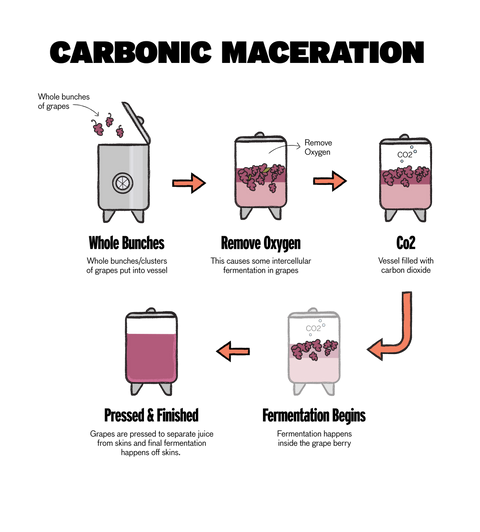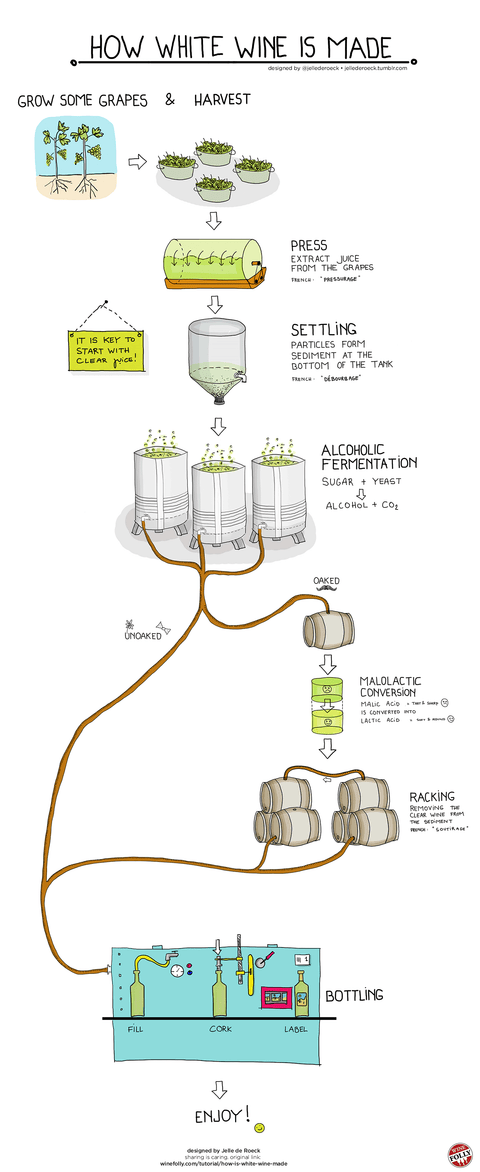What is Malolactic Fermentation? A Complete Guide

If you've ever enjoyed the creamy texture of a Chardonnay or the smooth richness of a red wine, you've likely experienced the magic of Malolactic Fermentation (MLF). This secondary fermentation process is a key step in winemaking, transforming sharp acids into softer, more palatable flavors. But what exactly is Malolactic Fermentation, and why do winemakers use it?
In this article, we'll break down the science, benefits, and effects of MLF on both red and white wines.
Understanding Malolactic Fermentation (MLF)
At its core, Malolactic Fermentation is not actually a fermentation in the traditional sense. Instead, it's a bacterial process where lactic acid bacteria (usually Oenococcus oeni) convert harsh malic acid (found in green apples) into softer lactic acid (found in milk and yogurt).
This process results in:
- A smoother, creamier texture in the wine
- Reduced sharp acidity
- Flavors like butter, cream, or even a subtle nuttiness
Winemakers often refer to MLF as the "second fermentation," as it typically follows the primary alcoholic fermentation.
Learn more about the basics of winemaking in our article: How Red Wine is Made: Step by Step.
Why Do Winemakers Use Malolactic Fermentation?
Malolactic Fermentation serves several important purposes in winemaking:
- Acidity Control: MLF softens high acidity, making wines smoother and rounder on the palate.
- Flavor Development: It introduces creamy, buttery, and nutty flavors, especially in wines like Chardonnay.
- Microbial Stability: MLF stabilizes the wine, reducing the risk of spoilage later.
While most red wines undergo MLF naturally, winemakers are selective about whether white wines should undergo the process, as it can dramatically alter the final flavor profile.
Curious about wine acidity? Discover more in our guide to Understanding Wine Acidity.
Which Wines Undergo Malolactic Fermentation?
- Almost All Red Wines: Wines like Cabernet Sauvignon, Pinot Noir, and Merlot almost always undergo MLF to soften their natural acidity and integrate tannins.
- Selective White Wines: Chardonnay is the most famous example of a white wine that benefits from MLF, resulting in its signature buttery texture. However, wines like Sauvignon Blanc and Riesling often skip MLF to preserve their crisp, fruity character.
The Science Behind Malolactic Fermentation
During MLF, malic acid — a tart acid naturally present in grape juice — is converted into lactic acid by lactic acid bacteria.
- Malic Acid: Sharp, tart flavors (think green apples)
- Lactic Acid: Smooth, creamy flavors (think yogurt or butter)
This process also produces diacetyl, a compound responsible for buttery aromas and flavors. Winemakers can control the presence of diacetyl by adjusting fermentation temperature and duration.
Explore more about the science of wine fermentation in our detailed guide: Wine Fermentation Techniques Explained.
How Winemakers Control Malolactic Fermentation
MLF doesn’t always happen naturally; sometimes, winemakers need to encourage or prevent it:
- Encouraging MLF: Warm temperatures, the addition of lactic acid bacteria cultures, and specific nutrients.
- Preventing MLF: Lowering temperatures, adding sulfur dioxide (SO₂), and sterile filtration.
These decisions depend on the wine style and the winemaker's vision for the final product.
How Malolactic Fermentation Affects Wine Flavour
In Red Wines:
- Smoother tannins
- Enhanced complexity
- Richer mouthfeel
In White Wines:
- Buttery, creamy flavors (common in oaked Chardonnay)
- Reduced tartness
- Softer, fuller texture
Is Malolactic Fermentation Always Beneficial?
Not necessarily. While MLF can improve many wines, it’s not suitable for every style:
- Wines meant to be crisp and fruity (e.g., Sauvignon Blanc) may lose their vibrancy with MLF.
- If poorly managed, MLF can introduce off-flavors or unwanted aromas.
Learn about different winemaking techniques in our article: The Art of Winemaking.
How to Identify Malolactic Fermentation in Your Wine
When tasting wine, here are some clues that MLF has occurred:
- White Wines: Creamy texture, buttery aroma, and flavors of vanilla or cream.
- Red Wines: Smooth texture, softened acidity, and well-integrated tannins.
Next time you sip a glass of Chardonnay or Pinot Noir, see if you can detect the subtle effects of MLF!
The Takeaway: Malolactic Fermentation in Winemaking
Malolactic Fermentation is an essential tool in a winemaker's arsenal, transforming sharp, acidic wines into smooth, balanced masterpieces. While most red wines undergo MLF by default, its application in white wines depends on the desired style and flavor profile.
At McLaren Vale Cellars, we celebrate wines that highlight the best of Malolactic Fermentation.
Explore our premium selection of wines here.
Further Reading:
Cheers to your next glass of perfectly crafted wine! 🍷✨




Comments (0)
There are no comments for this article. Be the first one to leave a message!